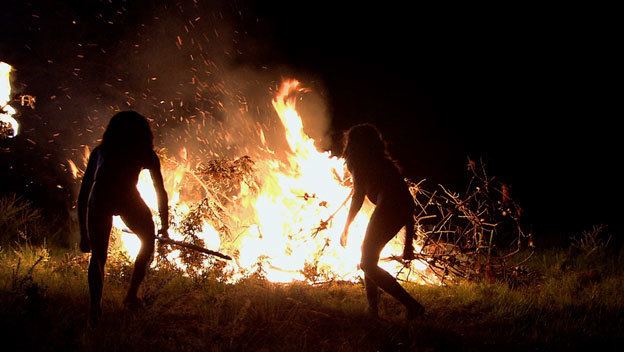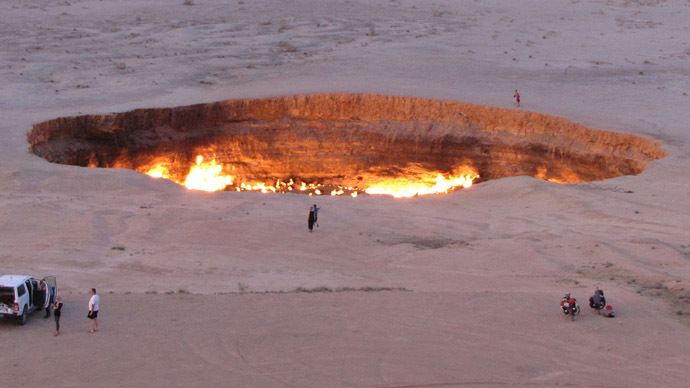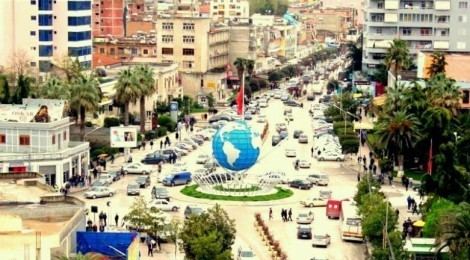Country Albania Area 78 km2 Population 55,845 | Mayor Baftjar Zeqaj (SP) | |
 | ||
University Kristal University, Fieri | ||
Map of Fier
Fier (definite Albanian form: Fieri) is a city and a municipality in Fier County in southwest Albania. Fier is 11 km (7 mi) from the ruins of the ancient city of Apollonia. The population of the former municipality at the 2011 census was 85,845.
Contents
- Map of Fier
- Fier albania viti 1997
- Fier albania the best city fierak4life
- Etymology
- History
- Apollonia
- Excavations and the Monuments of Apolonia
- Monument of Agonothetes
- Library and the Odeon
- House with Mosaics
- Fontana
- Museum of Apollonia
- Ardenica Monastery
- Geography
- Economy
- Demographics
- International relations
- References

Geographically, it is located on the center of the country surrounded by hills. The city is located some 16 kilometres east of the Adriatic Sea and 100 kilometres south of Tirana.

The ruins of Apollonia are situated in the Fier region. Apollonia was founded in 588 BCE by Greek colonists from Corfu and Corinth, on a site initially occupied by Illyrian tribes.
Fier albania viti 1997
Fier albania the best city fierak4life
Etymology
The name comes from Albanian meaning fern. A hypothesis is that the name of the city comes probably from the Italian word fiera, meaning trade fair in English, because in the 14th and 15th century the location was used by the Venetian traders as a marketplace to purchase agricultural products from the Myzeqe lowlands. The settlement took city status in 1864 when Kahreman Pasha Vrioni, the local governor, asked from some French architects to project a future city as an artisan and trade center. During the 1864–1865 period a market for 122 merchants was built along the Gjanica river. The first inhabitants of the city were the servants of Kahreman Pasha Vrioni and members of Vlach families that had lived in the area since the early 19th century period.
History
The history of Fier is bound up with that of the oil, gas and bitumen deposits nearby. The presence of asphalt and burning escapes of natural gas in the vicinity was recorded as early as the 1st century AD. Dioscorides, in Materia Medica, describes lumps of bitumen in the adjacent river Seman, and the concentrated pitch on the banks of the Vjosë river Strabo, writing in about AD 17 states:
On the territory of the people of Apolonia in Illlyria there is what is called a nymphaeum. It is a rock which emits fire. Below it are springs flowing with hot water and asphalt... the asphalt is dug out of a neighboring hill: the parts excavated are replaced by fresh earth, which in time is converted to asphalt.
Apollonia
Twelve kilometres away from Fier is situated Apollonia, one of the two most important ancient Ilyrians colonial settlements in present-day Albania. It was founded in 600 BC on a hill near the sea, and near what was then the course of Vjosë river by settlers from Corfu and Corinth. At the time before the changes in land formation and the Adriatic coastline caused by an earthquake in the 3rd century AD, the harbour af Apollonia could accommodate as many as 100 ships. The site is thought to be on the southern boundary of a native Illyrian settlement, being mentioned in Periplus, a sailor's account of the Adriatic written in the middle of the 4th century BC by a Greek writer. It was near the territory occupied by the Illyrian tribes and close to the Greek tribe of the Chaonians.
The colony was said to have been named Gylaceia after its Corinthian founder, Gylax, and later changed its name to that of city of the God Apollo. According to archaeological investigations for 100 years Greek and Illyrian have lived in separate communities.
The economic prosperity of Apolonia grew on the basis of trade in slaves, and the local rich pastoral agricultural. In the middle of the 5th century BC, a workshop for minting coins was set up here. Through trade and commercial transactions these coins spread throughout Illyria and beyond its boundaries. In the years 214 BC onwards, the city was involved in the war between the Illyrian Taulanti and Cassander, the king of Macedonia, and in 229 BC came under Roman control. In 168 BC, its loyalty to Rome was rewarded. For 200 years, it was of central importance in the Roman effort to colonize the east and may have been an original terminus of the Egnatian Way. It was a vital stronghold for Caesar in the civil war between Pompey and Julius Caesar. In 45 and 44 BC, Octavian, later to become the Emperor Augustus, studied for 6 months in Apolonia, which had established a high reputation as a center of Greek learning, especially the art of rhetoric. It was noted by Cicero, in the Philippics, as 'magna urbs et gravis' a great and important city. Under the Empire, Apolonia remained a prosperous center, but began to decline as the Vjosë silted up and the coastline changed after the earthquake.
Excavations and the Monuments of Apolonia
The first attempts to conduct excavations in Apolonia were made during the first World War, by Austrian archaeologists who unearthed and explored mainly the walls that encircled the city. Systematic excavations began in 1824 by a French archaeological mission directed by Leon Rey, who brought to light a complex of monuments at the center of the city. A lot of excavations have been made by Albanian archaeologists during the last 40 years. Many objects are exhibited in the museum which has been the monastery of St. Mary.
Monument of Agonothetes
This monument decorated the center of the city. The structure had the form of a semicircle and served as an assembly place of the council of the city - the Bule. The front part of the structure was decorated in a special manner: there are 6 pillars crowned with capitals of the Corinthian style. An inscription dating from the middle of the 2nd century AD tells that the building was constructed by high-ranking officers of the city, a monument with the purpose of commemorating the death of his soldier brother. On the day of the inauguration of the monument, a show was staged in the city with the participation of 25 couples of gladiators. On the western side, from the top of the monumental structure, the tourists can see the ruins of the small temple of Artemis (Diana). At the eastern side there is a street which passes under a triumphal arch. On the opposite side of the monument of the Agonothetes, there is a colonnade decorated with marble statues.
Library and the Odeon
This structure rises behind the colonnade. Opposite the monument of Aganothetes stands an Odeon or 'small theatre' for 200 spectators. The building had a stage, an orchestra and tiers. There they gave musical shows, recitals, and held oratorical and philosophical discussions.
House with Mosaics
A couple of meters away was cavated a rich Apolonian dwelling house of the 3rd century AD: The mosaics are of all types. There are mosaics where the main decorative motives are simple geometric figures, others have ornamental mythological figures like : hypocamposes (seahorses), accompanied by Nereids and Erotes. One of the mosaics represents a scene where Archiles holds the wounded Penthesilea, the beautiful queen of Amazones, in his arms.
Fontana
The Fontana represents in itself a complex structure; it had a wall which collected all the waters that sprang from the earth, and four other aqueducts.
Museum of Apollonia
The Museum of Apollonia has 7 pavilions, a gallery and 2 porticos. Here are exhibited different objects that testify to the history of Apollonia.
Ardenica Monastery
The Church of St. Mary at the Ardenica Monastery is the most important part of the monastery. It is situated between the museum and the refectory. The church is of Byzantine style. The interiors of the church had once been painted, but today very few fragments from the mural paintings have remained. started to be built in 1282 by Emperor Andronikos II Palaiologos of Byzantium after the victory on the Angevins in Berat. The wall painting represents the Emperor as the builder of the church. The refectory of the monastery was built at the same time as the church.
Geography
The city of Fier is located on the center of the country. It is located some 16 kilometres east of the Adriatic Sea and 100 kilometres south of Tirana. The Seman river flows west through Fier and Mbrostar.
Fier is the seat of Fier County. The municipality was formed at the 2015 local government reform by the merger of the former municipalities Cakran, Dërmenas, Fier, Frakull, Levan, Libofshë, Mbrostar Ura, Portëz, Qendër and Topojë, that became municipal units. The total population is 120,655 (2011 census), in a total area of 619.90 km2 (239.34 square miles).
Economy
Fier is an important industrial city and is built by the Gjanica tributary of the Seman River, and is surrounded by marshland. With nearby Patos town, it is the centre of the oil, bitumen and chemical industries in Albania. Fier is a convenient place to stay to visit the major Classical sites at nearby Byllis and Apollonia. Main roads from the central square lead south to Vlora (35 km or 22 mi) and east to the oil and industrial town of Patos (8 km or 5.0 mi). Also, 19 km (12 mi) to the west of the city centre, one will find the picturesque Seman Beach.
Fier is also known for its olive trees production (Kalinjioti cultivar) which contributes to the olive oil sector of Albania. Together with Vlora, Berat and Elbasan they provide almost 90% of olive oil production.
Demographics
In the early twentieth century Fier was populated by Orthodox Christians, most who spoke the Aromanian language and a small minority who spoke the Albanian language. Like most southern Albanian regions, the people of modern Fier mostly speak a Albanian Tosk dialect. The population is mixed Orthodox and Muslim (typical of southern Albanian cities)- data shows that in 1918, just after independence from the Ottoman Empire. Fier and the surrounding countryside of the Myzeqe region formed a majority Orthodox Christian enclave, in which Muslims constituted roughly 35% of the population. Fier has been affected by emigration.
International relations
Fier is twinned with:
